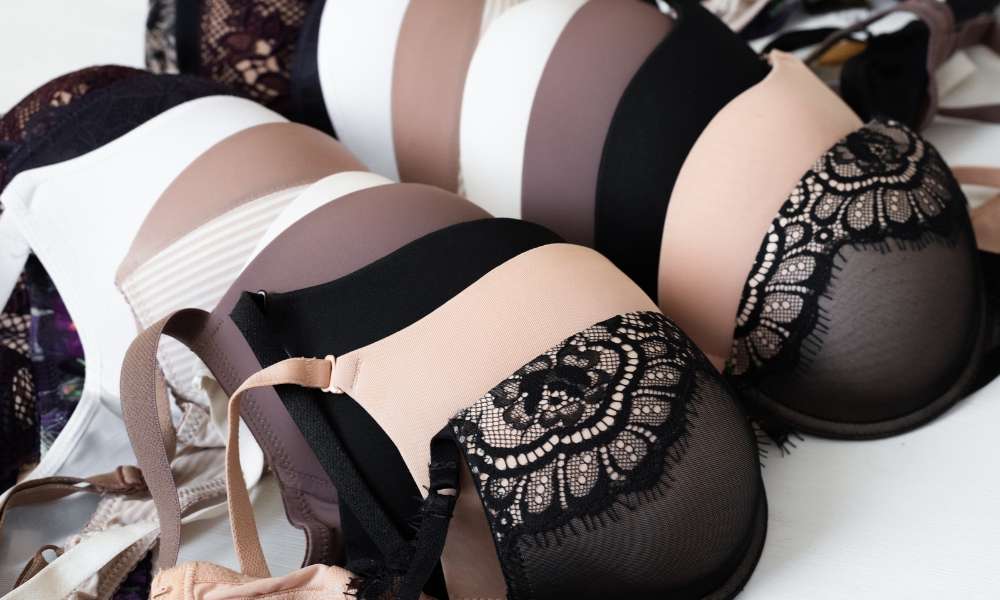Bra Without Underwire: 2025 Trends
The lingerie industry is witnessing a significant shift as more women embrace bras without underwires. This evolution reflects changing priorities in comfort, style, and health consciousness. The 2025 trends show that non-wired bras have moved beyond being merely a comfortable alternative to become fashion statements and everyday essentials. As technology and fabric innovations advance, these wireless designs now offer support and shaping capabilities that were once exclusive to their underwired counterparts.

Why Bras Without Underwire Are Gaining Popularity in 2025
The rapid rise in popularity of non-wired bras stems from multiple factors converging in 2025. Consumer demand for comfort-first apparel has accelerated post-pandemic, with many women unwilling to return to restrictive undergarments. Manufacturers have responded with innovative designs that address previous limitations of wireless options. Health consciousness plays a significant role too, with increased awareness about potential issues associated with constant underwire pressure against breast tissue and surrounding areas. Additionally, the body positivity movement has encouraged embracing natural breast shapes rather than artificially molded silhouettes, making wireless options more appealing to a broader demographic.
The sustainability factor cannot be overlooked either. Non-wired bras typically use fewer materials and components, aligning with eco-conscious consumer values that continue to shape purchasing decisions in 2025. Social media influence has further accelerated the trend, with comfort-focused influencers showcasing stylish wireless options that perform well during various activities and outfits.
How Underwire-Free Designs Improve Comfort Without Losing Shape
The most remarkable advancement in 2025’s wireless bra technology is the ability to provide excellent support without sacrificing shape. Modern designs achieve this through strategic seaming techniques that create three-dimensional cups mimicking the lift traditionally provided by underwires. Multi-directional stretch fabrics with varying elasticity zones create targeted compression where needed while offering flexibility elsewhere.
Engineered panels have replaced rigid wires, using densely knitted zones that follow the natural breast contour. These panels provide lift from beneath and support from the sides without digging into the skin. Some innovative brands have incorporated lightweight polymer inserts that offer structure without the rigidity of metal. These inserts conform to body temperature, creating a customized fit that moves naturally with the wearer while maintaining shape throughout the day.
The Role of Fabrics and Cuts in Modern Non-Wired Bras
The fabric revolution propelling 2025’s wireless bra trends cannot be overstated. Technical textiles now incorporate micro-encapsulated cooling agents to enhance comfort during extended wear. Four-way stretch materials with memory properties retain their shape while adapting to body fluctuations throughout the day and month. Some cutting-edge designs feature zone-specific compression knit patterns that provide tailored support precisely where needed.
Cut innovations focus on distributing weight across the entire garment rather than concentrating stress on specific points. Wider underbands stabilize without constriction, while strategically placed side panels prevent tissue migration. Seamless construction techniques have advanced significantly, with heat-bonded edges replacing bulky seams that would otherwise create pressure points. The racerback and cross-back designs have been reimagined to provide additional support for fuller busts without sacrificing style or requiring underwire reinforcement.
Why Women Are Choosing Wireless Bras for Both Style and Health
Health considerations are driving many women toward wireless options in 2025. Emerging research continues to examine potential connections between constant underwire pressure and issues like restricted lymphatic drainage and tissue discomfort. While conclusive medical evidence remains limited, many women report reduced chest and shoulder tension after switching to well-designed wireless alternatives.
Style no longer requires sacrifice when choosing wireless options. The aesthetic evolution of non-wired bras has been remarkable, with designs now featuring elegant details like delicate lace overlays, modern minimalist lines, and fashion-forward patterns previously found only in traditional structured bras. The versatility factor also appeals to busy women seeking solutions that transition seamlessly between work, exercise, and leisure without requiring multiple bra changes throughout the day.
How Non-Wired Bras Are Reshaping Everyday Lingerie Essentials
The wireless revolution has fundamentally changed what women consider essential in their lingerie collection. Multi-functional wireless bras have replaced specialized styles for many consumers, with a single well-designed piece serving multiple purposes. Manufacturers have responded by creating expanded size ranges that accommodate diverse body types with the same attention to support and shaping previously reserved for smaller sizes.
Technology integration represents another frontier in this evolution. Smart fabrics with temperature regulation properties adjust to body heat fluctuations, while moisture-wicking technologies derived from athletic wear enhance comfort during all-day wear. Some premium wireless options feature gentle compression zones that contribute to improved posture by encouraging proper alignment without rigid structural elements.
The retail landscape reflects this shift, with major lingerie retailers dedicating significantly more floor and digital space to wireless options than in previous years. Even traditional underwire-focused brands have expanded their wireless offerings to meet consumer demand, signaling a permanent change in how women approach everyday undergarments.
This article is for informational purposes only and should not be considered medical advice. Please consult a qualified healthcare professional for personalized guidance and treatment.




